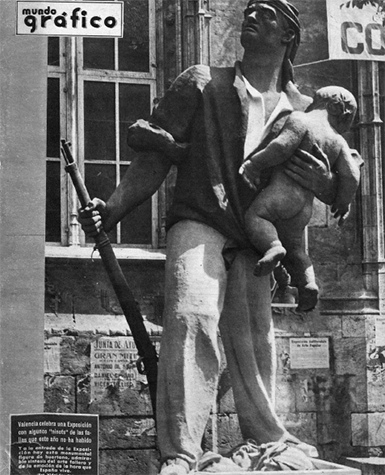Gallery Talk: Factories and Fire
Spanish Monuments in Moscow, 1937
Join Miguel Caballero for a gallery talk in Revolution Every Day.
In the first decades of the 20th century, many intellectuals complained that monuments had become invisible, irrelevant. Ancient buildings and sculptures are part of the everyday life of people, who may run into their city monuments so often that they lose interest and pay little attention to their familiar forms. Communist artists and intellectuals were particularly concerned with overcoming this crisis and re-inventing monuments in a way that they would regain their effectiveness, becoming tools of political transformation.
This gallery talk seeks to be a bridge between the ongoing exhibition Revolution Every Day in the Smart Museum and the upcoming exhibition Brick, Cardboard and Ashes. The Experimental Monuments of International Communism, which will take place in the Schusev State Museum of Architecture in Moscow in 2019. Participants will be invited to look at the pieces shown in the current exhibition in order to reflect on what a monument was and what role monuments had in Soviet everyday life in the 1930s. Likewise, this talk will address the discussions developed between Spanish and Soviets artists and intellectuals regarding this issue, presenting a particular case: the exchange of experimental monuments between the two countries in 1937, against the backdrop of the Spanish Civil War and the tangible opportunity for the internationalization of socialism.
FREE, open to all.
About the presenter
Miguel Caballero (PhD Princeton University, 2017) is Collegiate Assistant Professor and Harper Fellow at the University of Chicago. His book manuscript, tentatively entitled Monumental Anxieties. Writing the Future in Paper and Stone (1920-1970s), studies how both literature and monuments were used to propose utopian futures in the 20th century. Regarding monuments, he argues that both capitalist and socialist states redefined the role of monuments in similar ways: Instead of keeping societies rooted in their past, monuments were built to become catalysts of change, to transform communities and embrace the ideals of desirable futures.
